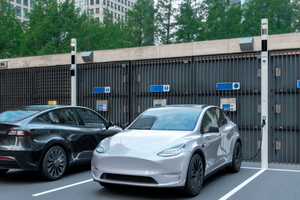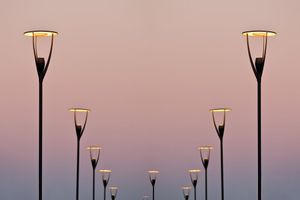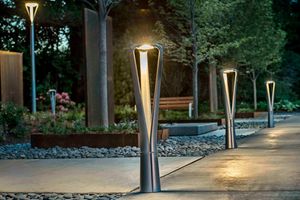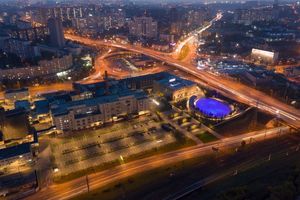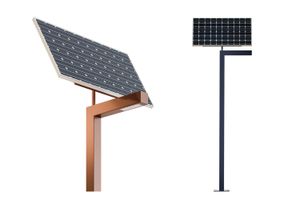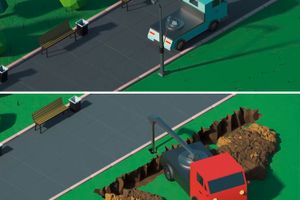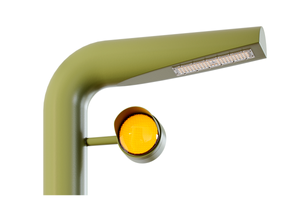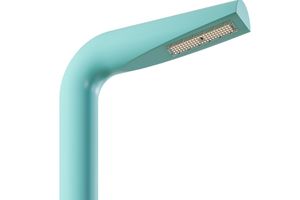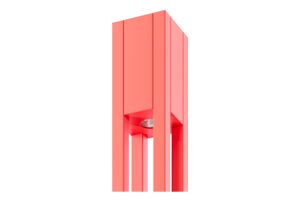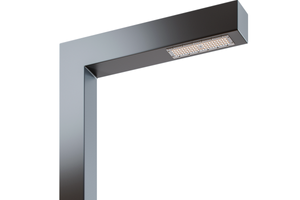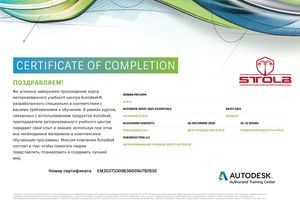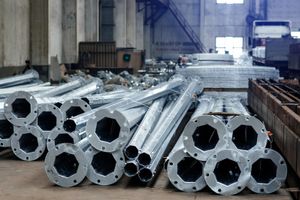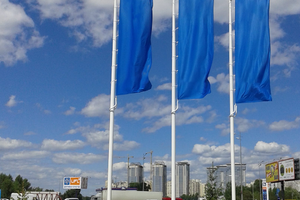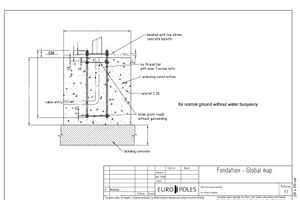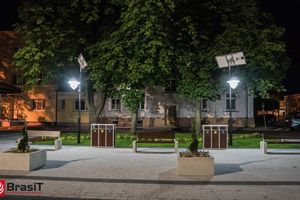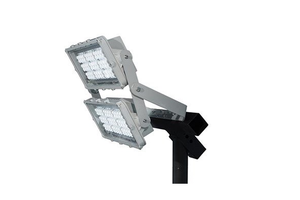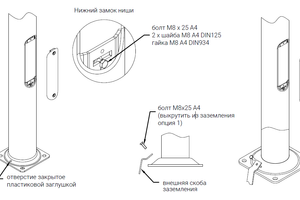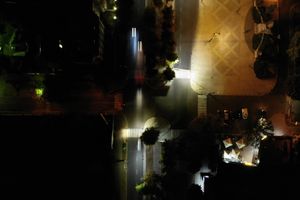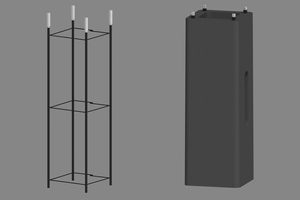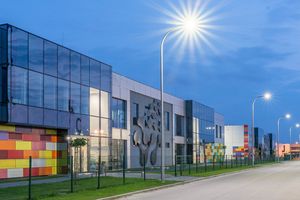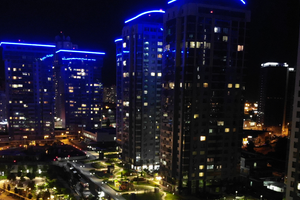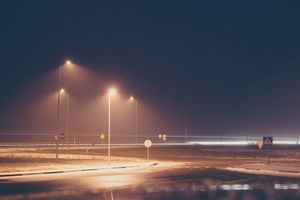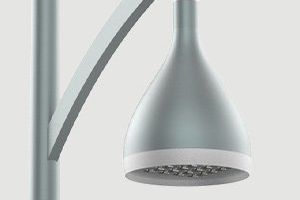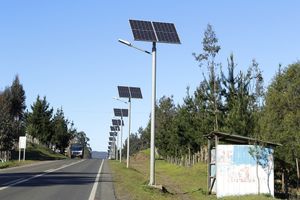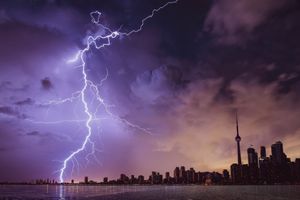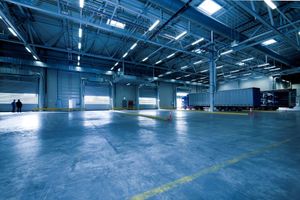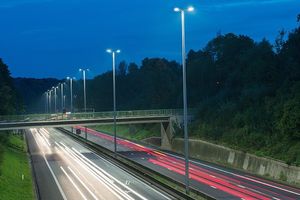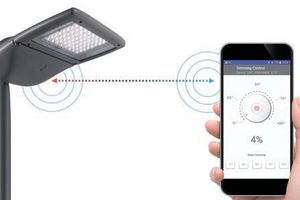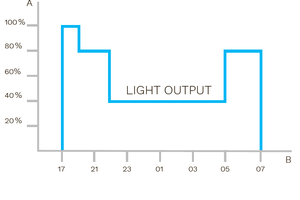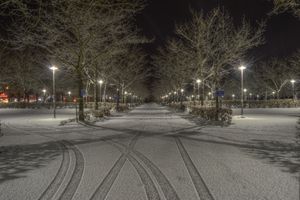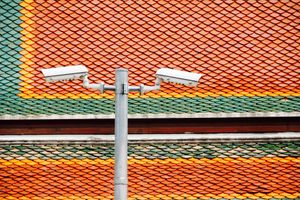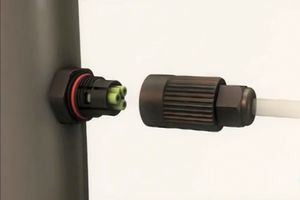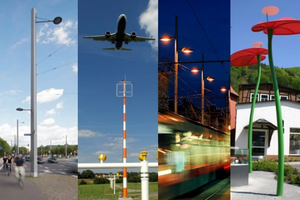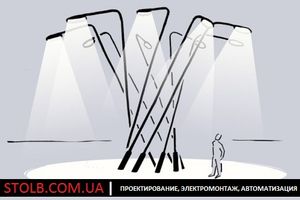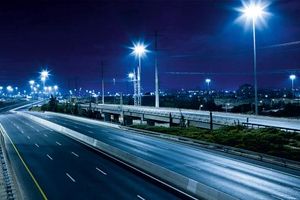
Corrosion is the most ferocious enemy of metals. Annually it destroys millions of tonnes of iron-containing materials, while threatening thousands of people's lives. Lighting columns, like other metal structures affected by corrosion, can fall on passers-by because of the slightest gust of wind. Tragedy can happen in just a second! To prevent this from happening, conscientious manufacturers pay a lot of attention to the anti-corrosion protection of their products - accurately and in accordance with special technologies apply a thin layer of zinc on the surface of the column. This process is called galvanizing. It is about him that we propose to discuss further. That's about this process we're offering to talk further.
The essence of the process of galvanizing metal
Galvanizing is a chemical process. Its essence is simple: after applying a thin layer of zinc onto the metal, these materials form a tandem galvanic couple. At the same time, zinc has a higher degree of electronegativity than steel. When exposed to water or other aggressive corrosive substances on metal constructions, zinc is the first to be attacked. Their interaction with the metal reduced to almost zero.
The protection of the structure will continue until there is a layer of zink. But even after it is damaged, there will be a barrier of zinc hydroxide on the metal surface. It appears as a result of the interaction of oxygen and zinc. Accordingly, you can extend the working life of a particular metal structure in several times.
Advantages of galvanizing of metal structures
There are definitely a lot of them. We bring to your attention only the main ones:
- Galvanizing is believed to be more long-lasting and reliable protection against the corrosion than standard painting.
- Zinc does not exfoliate from the surface of metal parts and structures (unlike paint). And it's all because it's not just applied to the surface, but melts into it.
- Galvanized surface can serve up to 60 years even in the most aggressive surrounding conditions. At the same time, there won't be the slightest need for reconditionings during all this period.
- The process of galvanizing can be carried out under any temperature conditions. The success of the procedure is assured even at -250 C.
On the whole, if you have a dilemma: to paint metal or to galvanize it, then whenever possible, always choose the second option.
Types of metal galvanizing
Nowadays, galvanizing is performed by using different technologies. For this purpose different equipment and materials could be used. The most common methods of galvanizing are:
- hot dip;
- cold.
Worth to note that there is also gas-thermal and thermal diffusion galvanizing. But these methods are not very popular.
Choice of hot or cold galvanizing depends in what conditions will be used metal detail or structure.
Features of hot dip galvanizing
The main advantage of hot dip galvanizing is considered high quality and durable coatings. But it also has drawbacks:
- not always perfect appearance of products (If careless handling can be seen zinc streaks);
- forbiddance on welding of galvanized surface (This is very inconvenient if on-site installation will be required to weld several structures).
The process of hot dip galvanizing takes place as follows:
- Preparation of the surface to be processed (cleaning, degreasing, digestion in acid solutions, washing, fluxing, drying).
- Immersion of metal construction in a bath filled with zinc.
- Blowing the product with compressed air (drying takes place while blowing out extra zinc particles).
It should be noted that the list of products that can be subjected to hot dip galvanizing is limited by the size of baths. But for large industries there are no obstacles. For example, lighting columns, power lines, scaffolding are made in exactly this way.
Features of cold galvanizing
There are two types of cold galvanizing:
- electroplating;
- using zinc-containing soil.
Electroplating cold galvanization is a process during which the piece to be processed is immersed in a special bath with the electrolysis. Then it appears the protective layer, however, 3-4 times thinner than on surfaces that have been treated with other methods of galvanizing. This method should be used for parts that will serve in a non-aggressive climate conditions and won't have a significant "responsibility."
The process of galvanizing with using of zinc-containing soil is very simple. A special zinc-containing blend is applied on the surface of the workpiece or structure with equable layer. Most often, it is zincconol. It is important to know that the share of zinc in the mixture with polymer, polyurethane and ether filler exceeds 80%. Ideally, 95-98%. At the same time, a roller, a brush or any other handy tool could be used when applying. For oversized hardwear metal structures with complex construction or the presence of inaccessible places, you can even use a paintbrush.
Cold galvanizing is convenient because it can be applied even to those structures that have been already installed. For example, on mounted lighting columns, track elements, etc. Also in this way you can cover welding seams, making the metal structure practically non-invasive.
But, as in hot, cold galvanizing has certain disadvantages. The finished coating can not boast with durability. Unfortunately, it is quite vulnerable to mechanical damage. And the operator requires the utmost care when applying a layer of zinc. Organic solvents that are used during cold galvanizing, can cause irreparable harm to health. Therefore, safety is above all!















































